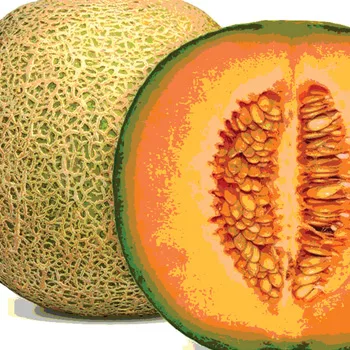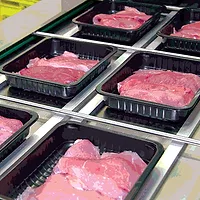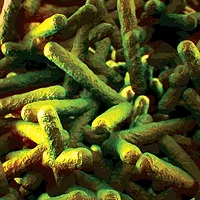Environmental Monitoring for Listeria: Getting Started

No one could have predicted that a major listeriosis outbreak in 2011 would be linked to a primary handling operation of fresh, whole cantaloupes. Only two other listeriosis outbreaks have been linked to commercially prepared fresh or fresh-cut produce in the U.S.: the watershed 1981 outbreak linked to coleslaw that first brought Listeria monocytogenes to national attention, and the 2010 outbreak linked to fresh-cut celery, where the source of contamination was identified as poor facility sanitation practices and a lack of environmental monitoring in the fresh-cut operation.
Unlike with Salmonella and pathogenic Escherichia coli—the two other bacteria of major importance in fresh produce food safety—the most likely source of L. monocytogenes contamination of fresh produce is not fecal contamination. Rather, L. monocytogenes is considered to be primarily a soil bacterium, expected to be found in field environments and recoverable from fresh produce. Why there have not been more listeriosis outbreaks linked to fresh produce is unknown (and a subject ripe for investigation), but studies of all three outbreaks revealed that the operations had conditions that led to significant postharvest growth of L. monocytogenes.
In 2008, the U.S. Food And Drug Administration (FDA) published a draft guidance for industry,[1] recommending that operations for manufacturing ready-to-eat products vulnerable to L. monocytogenes growth implement environmental monitoring programs to detect when and where Listeria may have become entrenched in the environment, potentially becoming a source of product contamination. While the draft guidance was not written specifically for fresh-cut products, and some of the recommendations may not be practical for those products, the draft guidance does have some important information. Because of their typically wet and cold environments, fresh-cut operations are vulnerable to Listeria-finding harborage points. Fortunately, while L. monocytogenes is one of the few foodborne pathogens that can grow in cold environments (> 32 ºF), it grows slowly and does not compete well against other cold-tolerant microorganisms, which can cause spoilage but are not pathogenic. However, as the celery incident demonstrated, it is possible. Therefore, every fresh-cut operation should implement an environmental monitoring program aimed at detecting Listeria entrenchments in processed product handling areas.
An effective Listeria monitoring program cannot be fully described in this short article, but examples can be found in Tompkin et al. (1999),[2] who recommended a zone approach to environmental monitoring, that is, actively monitoring zones around and on food contact equipment. Since everything ultimately ends up in the floor drains, they are a particularly good location to test if Listeria has invaded the processing area, such as swabbing the drains after washing down equipment but before sanitation. As Tompkin et al. described, occasional transient findings of Listeria in the processing environment are not unexpected, especially when working with fresh produce. However, recurring positives are a reason for concern and should trigger more rigorous equipment testing and sanitation to find and destroy Listeria that may have found a harborage point.
Since L. monocytogenes is not unexpected on raw produce, field and raw produce testing for the pathogen is not likely to yield useful information—it will be found, but does not necessarily indicate an unsafe condition. Likewise, finished product testing is not likely to be as sensitive to detecting potential contamination as environmental monitoring. However, environmental monitoring programs should be designed to find harborages, not just meet customers’ expectations for Listeria testing. Microbiologists skilled in Listeria detection should be consulted to develop a series of rotating monitoring points to detect when Listeria has invaded the processing area, and these should be tested vigorously (e.g., avoid wasting efforts on smooth surfaces; swab weld joints and hidden surfaces instead). Initial findings of Listeria spp. should lead to more aggressive cleaning and sanitizing in the area and retesting. If retesting yields negative findings, then the operation should go back to normal monitoring of the area. If retesting yields positive findings, then the Listeria may have found a harborage point, which needs to be found through extensive testing and eliminated like any pest. Listeria is a pervasive microorganism and has found harborage in unlikely places, such as hollow ladder rungs, hollow conveyor rollers, facility walls and chill tunnel insulation.
The tragic outbreak last year demonstrated that packinghouses might be as vulnerable to Listeria harborage and product contamination as fresh-cut operations. While Listeria is not likely to become entrenched in dry environments, operations or equipment that are routinely wet are vulnerable. Additionally, packinghouses that are not routinely held at the cold temperatures of fresh-cut operations can be even more vulnerable; while Listeria has a competitive advantage because it can survive and grow in cold environments, it likes warmer environments even more.
For more information about L. monocytogenes and environmental monitoring programs, operations should consult FDA’s Bad Bug Book,[3] FDA’s Listeria guidance for industry, or a commercial laboratory experienced in Listeria and environmental testing.
David E. Gombas, Ph.D., is the senior vice president, food safety and technology, at the United Fresh Produce Association.
2. Tompkin, R.B., V.N. Scott, D.T. Bernard, W.H. Sveum and K.S. Gombas. 1999. Guidelines to prevent post-processing contamination from Listeria monocytogenes. Dairy Food Environ Sanitation 19:551–562.
Looking for quick answers on food safety topics?
Try Ask FSM, our new smart AI search tool.
Ask FSM →








